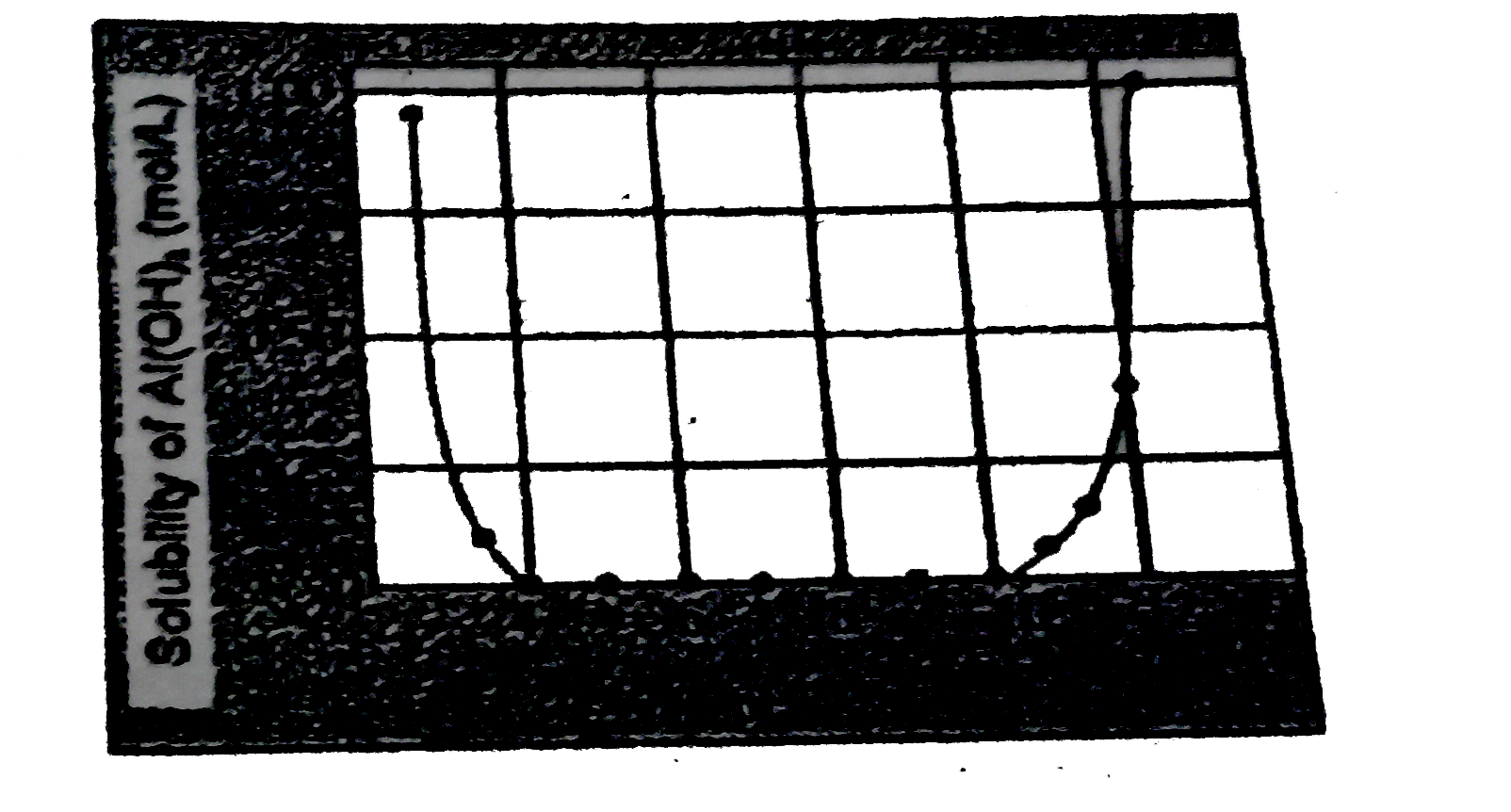The salt Al(OH)3 is involved in the following two equilibria,
Al(OH)3(s)⇔Al3+(aq)+3OH⊙(aq),ksp
Al(OH)3(s)+OH−(aq)⇔[Al(OH)−4](aq),kc
Which of the following relationship is correct at which solubility is minimum?
[OH−]=(KspKc)1/3
[OH−]=(KcKsp)1/4
[OH−]=√(KspKc)1/4
[OH−]=(3KspKc)1/4
The correct Answer is:D
S=[Al+3(aq)]+[Al(OH)4(aq)]−
S=Ksp[OH−]3+Kc[OH−]
for minimum solubility dsd(OH−)=0
∴−Ksp×3[OH−]4+Kc=0,[OH−]=(3KspKc)1/4
Topper's Solved these Questions
Similar Questions
Knowledge Check
Al(OH)3 is
AacidicBBasicCamphotericDneither acidic nor basicThe salt Al(OH)3 involved in the following two equilibria.
Al(OH)3(s)⇔Al3+(aq)+3OH−(aq),Ksp
Al(OH)3(s)+OH−(aq)⇔Al(OH)−4(aq),Kc
Which of the following relationship is CORRECT at which solubility is minimum?A[OH−]=(KspKc)1/3B[OH−]=(KcKsp)1/3C[OH−]=√(KspKc)1/4D[OH−]=(3KspKc)1/4Amphoterism
Amphoteric oxides, such as aluminium oxide, are soluble both in strongly acidic and in strongly base solutions :
In acid:Al2O3(s)+6H3O+(aq)⇔2Al3+(aq)+9H2O(l)
In base:Al(OH)3(s)+OH−(aq)⇔Al(OH)−4(aq)
Dissolution of Al(OH)3 in excess base is just a special case of the effect of complex-ion formation on solubility.Al(OH)3 dissolves because excess OH− ions convert it to the soluble complex ion Al(OH)−4(aluminate ion)The effect of pH on the solubility of Al(OH)3 is shown in figure.

Other examples of amphoteric hydroxides include Zn(OH)2,Cr(OH)3,Sn(OH)2andPb(OH)2, which react with excess OH− ions to form the soluble complex ion Zn(OH)2−4(zincate ion),Cr(OH)−4(chromite ion),Sn(OH)−3 , Fe(OH)2andFe(OH)3 , dissolve in strong acid but not in strong base.
Zn(OH)2 is a amphoteric hydroxide and is involved in the following two equilbria in aqueous solutions
Zn(OH)2(s)⇔Zn2+(aq)+2OH−(aq),Ksp=1.2×10−17
Zn(OH)2(s)+2OH−(aq)⇔[Zn(OH)4]2−(aq),K∘=0.12
At what pH the solubility of Zn(OH)2 be minimum ?A4B10C6D8
The salt Zn(OH)2 is involved in the following two equilibria,
Zn(OH)2(s)⇔Zn+2(aq)+2OH−(aq),KspZn(OH)2=1.2×10−17
Zn(OH)2(s)+2OH−(aq)⇔[Zn(OH)4]2−(aq),Kc=0.13
Calculate the pH at which the solubility of Zn(OH)2 be minimum. Also find the solubility at this concentration.
View SolutionThe salt Zn(OH)2 is involved in the following two equilibria:
Zn(OH)2(s)⇔Zn3+(aq)+2ΘOH(aq)Ksp=1.2×10−17
Zn(OH)2(s)+2ΘOH⇔Zn(OH)2−4(aq)Kf=0.12
Calculate ∣∣∣ΘOH∣∣∣ at which solubility of Zn(OH)2 be a minimum. Also find the solubility of Zn(OH)2 at this pH.
View SolutionThe salt ZN(OH)2 is involved in the following two equilibria:
Zn(OH)2(s)⇔Zn3+(aq)+2ΘOH(aq)Ksp=1.2×10−17
Zn(IH)2(s)+2ΘOH⇔Zn(OH)2−4(aq)Kf=0.12
Calculate ∣∣∣ΘOH∣∣∣ at which solubility of Zn(OH)2 be a minimum. Also find the solubility of Zn(OH)2 at this pH.
View SolutionThe expression for equilibrium constant, Kc for the following reaction is
Fe3+(aq)+3OH−(aq)⇔Fe(OH)3(s)
View SolutionThe expression for equilibrium constant, Kc for the following reaction is
Fe3+(aq)+3OH−(aq)⇔Fe(OH)3(s)
View Solution
